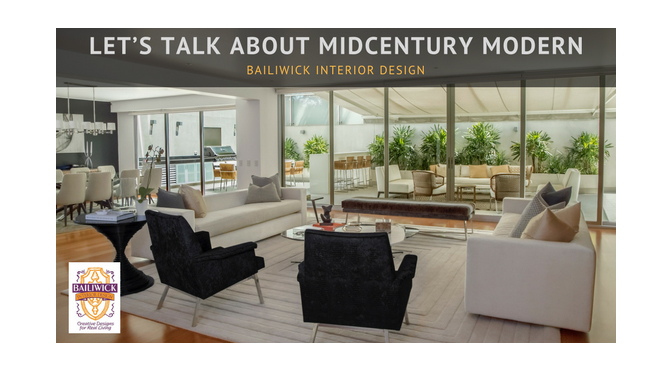Misused and misunderstood – the term “mid-century modern” has become an all-inclusive term used by almost everyone in the design community. Traditionalists will tell you wood and perhaps plastic furniture frames and solid woven fabrics are the predominant material used in this genre. But Modernists will expand the definition to allow for a whole slew of new materials such as glass and metals. Whatever your viewpoint, one thing is certain, Mid-Century Modern design bridges the gap between many different styles, which explains why it’s become a popular choice when homeowners are looking for a style that everyone can agree on.
This timeless style began in the 1930s and matured through the 1960s when the use of plastics was really taking hold. It was a direct response to the overly ornate decorative styles of the Victorian Era. Most people consider Mid-Century Modern design “understated” and that’s what sets it apart, minimalist yet functional. Here are a few signature elements of this design style:
- Simple lines with use of geometrics and curves with an uncluttered feel to those lines
- Bold, solid colors
- Very limited and minimal ornamentation
- Typically light wood frames, but plastics were used as well
- Tight seat backs and seat cushions
Here are some suggestions on how to integrate these pieces and design ideas in your home.
- Seating typically has a tight-back and shallower-depth seats, with minimal cushions. Single-person lounge chairs offer more comfort than sofas or loveseats.
- Look for pieces that fit your lifestyle keeping in mind functionality
- Don’t try to replicate these designs identically, pick one or two pieces.
- Authentic pieces can get expensive – but there are some well-made knock-offs if the materials are “real”.
- Mid-Century Modern is about simplicity – so keep your room clutter-free for the best effect!
It’s all how you experience the design when you’re surrounded by it. Clean lines, balance, and textures, and colors, or the lack of them, should all be functional with its beautiful form.
You can find more advice from Carrie Oesmann by visiting her site http://www.bailiwickdesign.com/
About Carrie,




